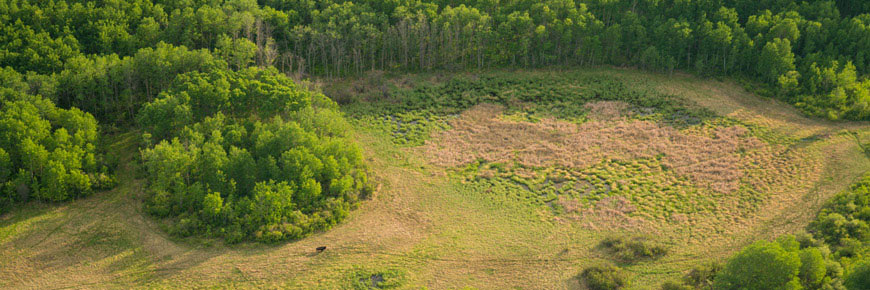
Bison management and research
Prince Albert National Park
The Sturgeon River plains bison are one of the few remaining free-ranging herds in North America. Monitoring is conducted throughout the year to examine bison habitat, movement, predator-prey relationships, range change and expansion.
Academic partners such as Laval Université, University of Saskatchewan and University of Manitoba conduct research that informs decisions related to bison management.
Aerial surveys
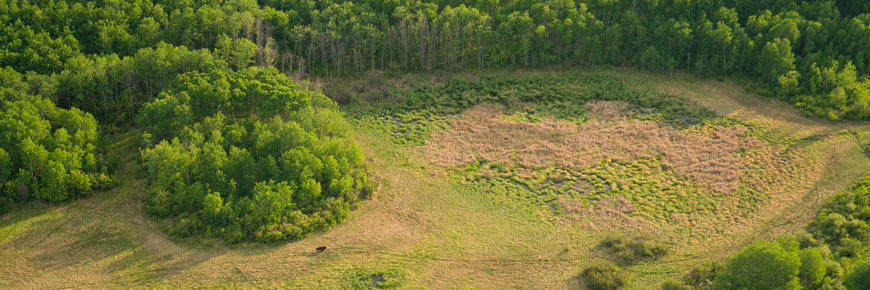
Aerial surveys of the plains bison herd are conducted annually to establish population trends since 1996. Surveys and local knowledge collected by the Sturgeon River Plains Bison Stewards indicate the population peaked between 2006 and 2008 at over 450 animals, and since then has declined. The current population is estimated at 120 animals - less than a quarter of the population in the early 2000s. The population is critically low; well below the target of 420 animals to maintain herd viability.
Diversionary fencing
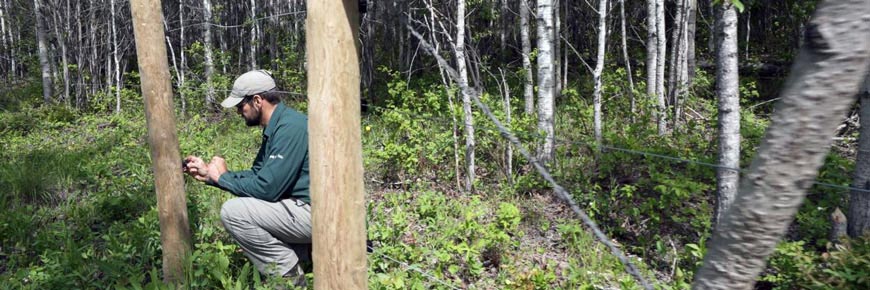
Electric diversionary fences were built in key areas along the southwest boundary of the park to reduce conflict and curb the decline of the Sturgeon River bison herd. The fences are reducing some of the time the bison spend on neighboring farmland. GPS data from 2014 to 2018 shows a significant reduction in the time bison spent on farmland during early summer to winter months.
Monitoring
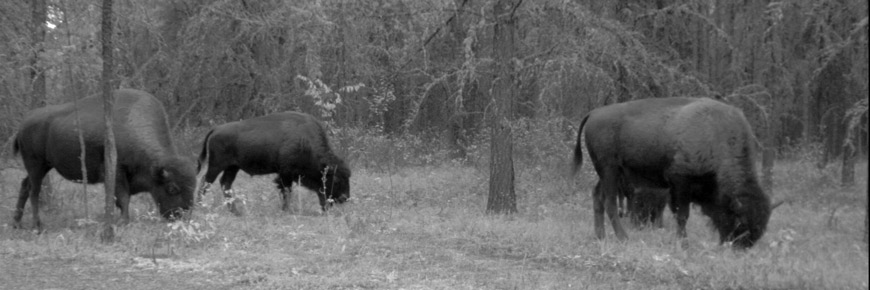
GPS collars were used to track and study the Sturgeon River plains bison in the park for many years beginning in 1996. The collars helped researchers track bison movements and outline the bison’s range both inside and outside the park. Tracking data showed what habitats bison are drawn to, how long they stay in an area, and how they move from one area to the next. Previous research combined with tracking data demonstrated that bison prefer meadows containing nutrient-rich sedge. However, bison are also drawn to highly appealing and nutritious feed and crops such as alfalfa, timothy and oats grown outside the park boundary. Understanding bison habitat preferences and movements creates opportunities to anticipate and reduce conflict.
Prescribed fire
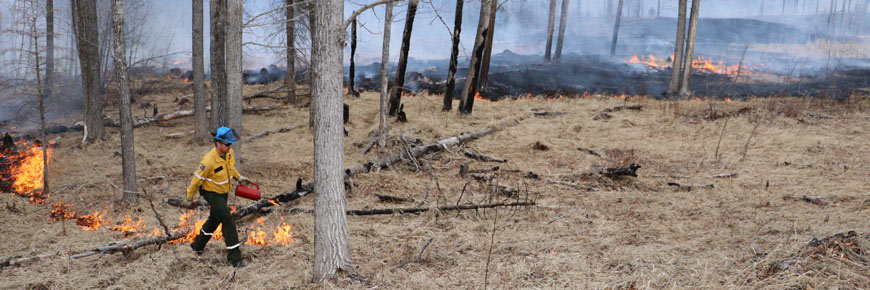
Prescribed fire is used to increase bison habitat and restore the grassland ecosystem. In the absence of fire, aspen forest encroached on grasslands and reduced the size of natural meadows. The change and loss of grasslands reduces biodiversity and habitat for animals like bison. Prescribed fire increases grassland and provides forage for bison and new growth after fire. These renewed grasslands provide an appealing alternative to pasture and crops, and may help reduce the amount of time bison spend outside the park.
Wolves and bison
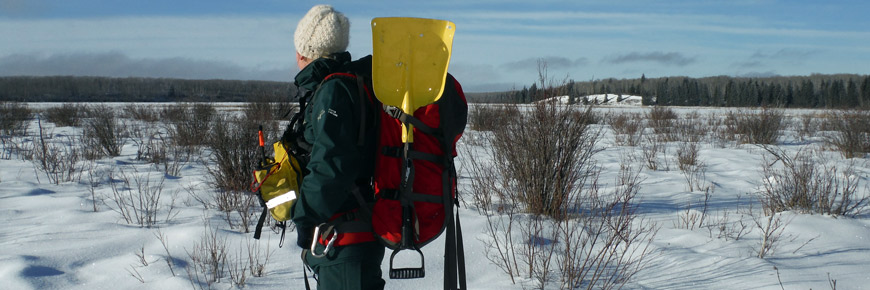
In 2013 a program was initiated to examine the relationship between wolf and bison populations in Prince Albert National Park. The Wolf Kill Site Investigation program used GPS collars to track the movement of wolves residing within the range of the Sturgeon River bison. Tracking collar data allowed researchers to determine the location of wolf kill sites. When wolves stop and congregate in one location for more than a few hours it is a strong indication that the pack is feeding on a kill. Wolf kill sites were visited to determine what the wolves were feeding on. The predator prey relationship between wolves and bison is at a healthy level.
Related links
- Date modified :